Your first getPerson() is invalid syntax and the function does not even attempt to return anything (if it was valid syntax). So, people.push(getPerson()) would generate an array of undefined(if the syntaxError was fixed) which will be entirely different than your second code block which generates an array of objects.
If, what you meant to ask about was something like this:
let people = []
function getPerson() {
return {
name: generateRandom.string()
age: generateRandom.number()
}
}
for (let i = 0; i < 10; i++) {
people.push(getPerson())
}
Then, this and your class will each create an array of objects and those objects will each have your two properties on them. The Class will contain some additional setup on the prototype that allows for subclassing, but if you're just asking about using the object with two properties, then these two would fundamentally do the same thing.
On a memory level, is there any difference in the outcome?
Without methods, your two properties will occupy the same amount of memory. The two properties are assigned directly to the object so those two properties use the same memory.
The class will actually set up a few other things on the object like a .constructor property and the object will get its own separate prototype. The prototype is shared among all instances. So, there could be slightly more memory usage for the class instance, but it's unlikely this makes a material difference.
If you defined methods directly on the object in the first implementation and methods in the class in the second implementation, then the class would definitely be more efficient because there would be one copy of the methods on the prototype vs. many separate copies of the methods on each instance of the object. But, you didn't show that in your question.
Which states that there are no classes in JS. Is this just syntactic sugar? 2 ways of doing exactly the same thing?
Classes are syntactic sugar, but they make it easy to define things in an efficient way without having to do a bunch of manual things. And, because the language sets things up for you, then everyone using a class definition creates code that works the same way.
You can manually build the same object that instantiating an instance of a class does, but it's a lot more code to do write all the bookkeeping that a class does for you. Your simple object with just two instance properties doesn't show any of that or need any of that, but when you start having methods and sub-classing things and overriding base methods and then calling base methods in your derived implementation, the class definition takes care of a some bookkeeping for you and simply lets you write, good extensible code faster and with everyone doing it the same way. Again, your simple object with just two properties does not show or need what a class does, but other uses of objects do.
For example, the class definition and new Person() creates an object that automatically sets yourObject.constructor to be the constructor that created the object. This allows other code to know what type of object it is or allows other code to abstractly create new instances of the same object. Methods are put on the prototype of the object and made non-enumerable. Constructors can call super(...) to execute the base class constructor (whatever it happens to be). Without the class definition, you have to do that very manually by calling the exact right function in the base class.


